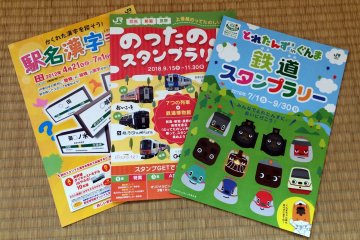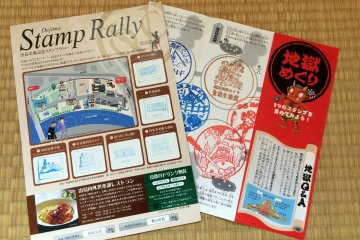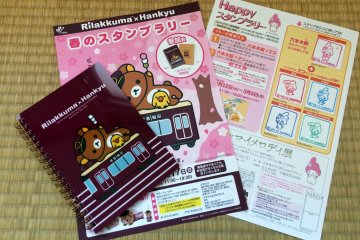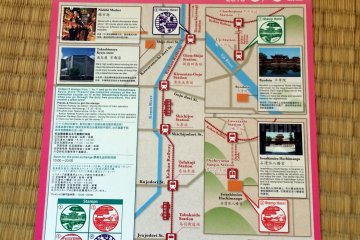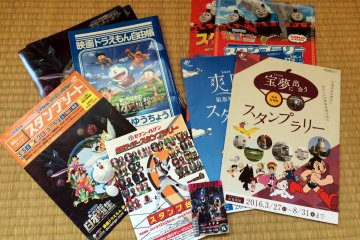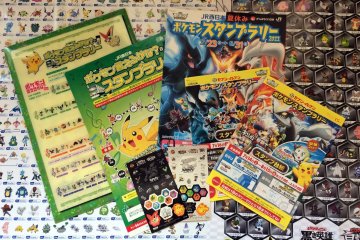You might have noticed the presence of commemorative stamps at tourist attractions and in train stations, and you might even have started to carry a blank notebook to collect stamps that cross your path. I can tell you that I do, and anytime I see a stamp I have to get it in my notebook. At some point, I found a stamp station with flyers where you could collect a series of stamps. It was my first contact with was is now one of my favorite things to do in Japan: Stamp rally.
Table of contents
What is a stamp rally?
A stamp rally is a course where you visit different locations in order to collect stamps, often sharing a common theme. Once you find a rally flyer or booklet, then you are ready to start your journey. There are also digital stamp rallies that have appeared, and for those, you have to scan a QR code or be at a specific GPS location. An app in your phone will record your presence, and then give you a stamp.
Stamp rallies are often organized by train operators, tourist association and shops, so the goal is to make you use their train, their store, or visit a location of interest. For me the rallies are really fun as I have the challenge to find all the stamps, and a chance to discover places I might not have found otherwise.
Goal
The goal of a rally is obviously to collect stamps, but in many instances, completing the rally comes with a perk. The most common is a gift offered once you collected a certain number of stamps. The gift can be anything, but may include clear file folders, notebooks, postcards, fans, calendars or sake cups, just to name a few. Sometimes you can enter a draw and get a chance to win a more expensive gift. In other cases, you only get the satisfaction of collecting all the stamps.
There are two main types of stamp rally, each with their own definition of completion. The first one is a rally with free spaces that you can fill with different stamps, and completing the rally could be based on criteria such as obtaining four of the available ten stamps. The second type has specific places for each of the different stamps, and completing the rally involves finding each one.
How to find stamp rallies
The best places to find stamp rallies are at train stations, as many are run by train operators. Look at the posters and flyer racks that you should find in almost any station. You can also check flyers at tourist destinations and tourist information centers as they might include a rally. I've also found some in konbini (7-Eleven to be more specific). Just keep an eye open - you might even find a stamp and discover the rally at the same time.
The tricky part is that everything will most likely only be written in Japanese, so look for the word スタンプラリー (stamp rally), or 巡り - めぐり (meguri - tour). Without some Japanese ability it can be difficult to understand where the stamps are or the requirements to get the prize, but it is worth a try!
Finding the stamps is usually not too hard as each point is indicated in the flyer, sometimes with a map. When the stamp is in a train station, there are often signs to guide you in the right direction. In the worst case, you can ask staff for help to find the stamp.
Cost
A lot of stamp rallies are free and the flyers are usually easy to get. In some cases, you have to pay a small fee (usually less than 500 yen) to get a stamp rally booklet. One of the more expensive examples is the Japan top 100 castles stamp rally, which has a dedicated book to collect the stamps.
There is also the collateral cost of getting to each of the points, especially in the case of rallies organised by train operators. It's common for them to place the stamps outside the gate, so you have to exit the station to get your stamp and pay again to go to the next stop. If you require many stops to complete a rally, check if there is a day pass that covers all the points - for example, stamp rallies held along the Yamanote line or the subway in Tokyo. For certain tourist attractions, you will also have to pay an entrance fee to access the stamp.
Timeframe
There are usually two types of stamp rally, seasonal or permanent. The most common are the seasonal variety, so if you plan to complete one be sure to take note of the time frame. It is also worth noting that in some cases, there is a schedule when the stamp is available, in line with the store or attraction's hours. In the case of stamps at train stations, they may store the stamp table out of reach after a certain time.
The permanent rallies are fewer. Some rallies run every year, such as the JR Pokémon summer stamp rally or the Tokyo Parks Fall Stamp Rally. There are also Japan-wide events such as the All-Japan 20 Towers Stamp Rally and the Japan Top 100 Castles stamp rally, but considering the scale of these, they can take a lot of time to complete.
Conclusion
I personally love stamp rallies as they bring me to new places, and I like the feeling of achievement when I can say that I collected all of the stamps. I haven't completed every rally I've found for several reasons, including lack of time or the difficulty required to collect all the stamps. Despite this, I always keep an eye open and try to collect as many stamps that I can, even if I do not get a gift at the end.
Another alternative to stamps rallies is to collect temple and shrine stamps, called goshuin. They also have pilgrimages that will bring you to see to a hundred temples and shrines depending on the pilgrimage of your choice. Just remember, do not mix commemorative stamps and goshuin.








